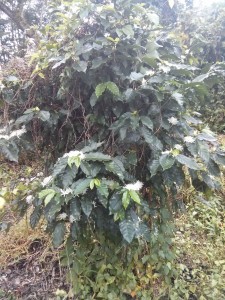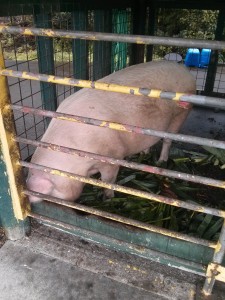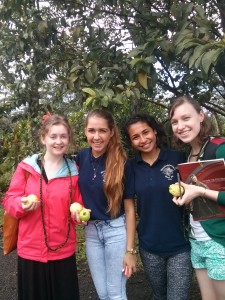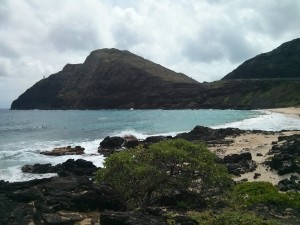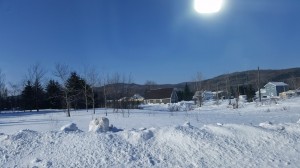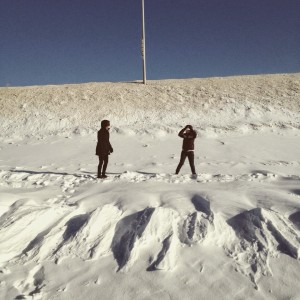Welcome to the blog! This blog was regularly updated during a collaborative project between 2012–2016. You can still learn more about the project and visit other resources at http://migmaq.org/
Maddie and Carol-Rose featured on the Canadian Language Museum Blog
Maddie and Carol-Rose speak of their experiences with Mi’gmaq retention efforts.
For the full post click here.
Bilingual Mi’gmaq-English Podcast
The first episode of “Pjila’si Mi’kma’ki” [Welcome to Mi’kma’ki], a bilingual Mi’gmaq-English podcast, debuted May 22, 2015. The podcast discusses issues relevant to Mi’gmaq people in the 21st century as well as furthers the preservation and conservation of Mi’gmaq language and culture. The podcast’s creator, Annie Claire, is from Elsipogtog, New Brunswick.
The first episode talks about child apprehension and foster care in Canada.
First episode can be here here
Check out podcast’s blog here
Recounting Hawai’i Part 3: Culturally-Situated Language Assessment
Three months later, I am still thinking about the talks at ICLDC. I thought I could close out my series of blog posts with a mention of a great talk by Melody Ann Ross (Fulbright-Clinton Public Policy Fellow, University of Hawai’i). Her talk focused on assessment planning for language programs—a part that is often overlooked or forgotten until the last minute (lack of planning). Does successful implementation program really mean that the program is successful? This, of course, depends on the program, on the community, and the learners involved, among other things. With the permission of the author, I am sharing the slides. I encourage everyone to take a look at them: Ross_AssessmentSlides.pdf
[Untitled] by Carol Dana
Pensive in her rocking chair
stiff and straight faced.
The hard line of her mouth
I would wait to see crack
To know what was inside.
Sometimes I felt I should hide
from her sternness and harsh ways,
Although there were many days
she would talk and smile with her friends,
passing the while
speaking in Passamaquoddy,
their eyes smiling with fun
when directed at me.
I wondered, now what have I done
to amuse them so?
I would be perturbed to no end
for some understanding.
Little did I know the ladies joked
about having fun, teasing, and sex.
They talked about human qualities,
What the neighbors said or done.
We were the age-old stream
of lndian people
Yet I couldn’t participate
because of my lack of native language.
Born and raised on Indian Island, Carol Dana has six children and nine grandchildren. In 2008 she earned her MAin education at the University of Maine. She has devoted years to Penobscot language revitalization, working with linguist Frank Siebert on the Penobscot dictionary project during the 1980s and teaching Penobscot at the Indian Island School during the 1990s. At present she is the cultural historical preservation officer for the Penobscot Nation, where she has helped to produce several workbooks, videos, and other cultural materials. The following poems first appeared in her chapbook When No One Is Looking.
from Dawnland Voices: An Anthology of Indigenous Writing from New England (2014)
Recounting Hawai’i Part 2: Culturally-situated language revitalization in action
While touring the school I noticed that every part of the students’ education somehow connected to the Hawaiian way of life. For example, on campus there is a large garden; there are guava trees, banana tress, a pineapple grove, coffee shrubs…students learn about these trees, when the season to pick the fruit are, how to pick the fruit and take care of the trees.
They also learn to take care of pigs that are kept on the grounds. In addition, our guides, Malia and Kamaile, both in 10th grade, explained that every Friday the whole school goes outside to learn about their surroundings, whether on campus or at the beach, where students can study ecology, biology, geology, etc.
The idea is that students learn by doing, hands-on, through a medium that is culturally relevant to Hawai’i..all of this done in the language, of course. I found another example of this in the classroom; in the back of every classroom is a corner with photos of students’ parents, grandparents and other family members. Our guides explained that having photos of their kupuna (ancestors) helps students remember why they are there; why they are learning the language and that they want to make their family proud as they will one day represent them out in the world. It is a way to make connections to language, culture, ancestry. This is only a small part of a larger, holistic approach to Hawaiian education, which is described in this following video: https://www.youtube.com/watch?v=lhELoIta084#t=163
He mana ko ka ‘ōlelo = there is power in language
Recounting Hawai’i Part 1: Culturally-situated language research
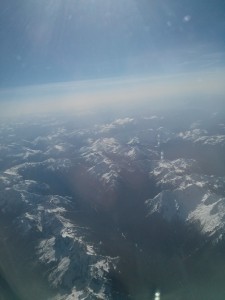 As we are flying over the beautiful mountains of B.C., I realize that my week-long Hawai’ian journey comes to a close. Despite this, I am certain this is only the beginning of my own venture into language revitalization and documentation.
As we are flying over the beautiful mountains of B.C., I realize that my week-long Hawai’ian journey comes to a close. Despite this, I am certain this is only the beginning of my own venture into language revitalization and documentation.
- Hitchhikers = linguists who are not permanent members of communities but rather visitors along for the ride
- As it turns out, language documentation can be fruitfully informed & even reoriented by guidelines created to teach communicative competence & proficiency in majority languages (i.e. taking a majority language proficiency test and making it suitable for smaller minority language communities)
- communicative competence = cultural knowledge and knowledge of social conventions
- Importantly, proficiency guidelines can be and should be informed by research in language acquisition, psycholinguistics and education
- Moreover, the guidelines should be task-oriented and culturally as well as socially situated
- That includes knowing how to speak, including knowledge of turn-taking mechanisms, appropriateness of nonverbal behavior, etc. (Savignon 2002)
- We should adopt a more action-oriented approach: language users are social agents who develop general particular communicative competences while trying to achieve their everyday goals
- This point is often overlooked or cut out by linguists who look at grammar; for instance, we tend to strip facial expressions in elicitations or when documenting natural speech
- (Here Grenoble emphasized, IT’S OK NOT TO LIKE THESE GUIDELINES AS LINGUISTS…BUT THEY ARE GOOD. This is what people WANT to know. This is what speakers in communities want to learn!)
- Language practices, too, can be revised. This is a large category that encompasses all the different ways we use language, e.g.:
- everyday idiomatic uses of language
- language games
- songs
- conversation, how to use language
- traditional: prayers, traditional speeches
- Thus, in documenting with your community, you need to ask yourself, “What skills are we trying to foster? What is realistic in language acquisition? What do learners want to know?” Paralinguistic meaning may be a big part of this.
- As an example, Grenoble presented some of her own research with Wolof, which is not endangered, but provides good evidence of shift in linguistic practices
- Wolof has clicks that are contrastive. They have not been documented as part of the morphosyntactic or phonological system but they are definitely there!
- Crucially, you can’t be a fluent speaker of Wolof without understanding/using these clicks!
- As a fluent speaker, you have to know how to say yes with a click, how to say no with a click, how to correct someone with a click, etc.
Listuguj Visit
Hi! I’m writing to introduce myself. My name is Carolyn Anderson, and I’m a visiting student at McGill this semester. While I’m here, I’m hoping to work on some Mi’gmaq materials, as well as starting to learn the language myself.
I’m a linguistics student, but I’m also interested in technology (which is why I’m excited about this blog!). I spent last semester at University of Victoria, learning about technology projects for different indigenous languages in British Columbia.
Some highlights of my semester were getting a sneak peek at a Nxa’amxcin online dictionary that is under development, hearing about the FirstVoices online language archiving and lessons program, and attending the release party for the 2014 Report on the Status of B.C. Languages.
During my semester in B.C., I was also conducting interviews with language activists and linguists about their experiences using technology for language revitalization, something I hope to continue here on the East Coast too.
I arrived in Montreal around New Years, and the weather was quite a shock. I’m a West Coast girl (I grew up in Tacoma, WA). I considered never ever leaving my apartment again, but then Carol-Rose Little offered to take me to Listuguj with her, so I packed up all my coats and mittens and tagged along.
I had a wonderful time in Listuguj, and I hope I can visit again soon. I had the chance to sit in on some recording sessions for the online Mi’gmaq dictionary, which was wonderful. It was fun watching Joe and Eunice come up with new example sentences for the words.
I know that language revitalization is slow and often difficult work. But in my travels across Canada this year, I’ve been seeing small victories everywhere. Whether it’s new videos being posted in the Indigenous Language Challenge Facebook group, preschoolers giggling in Mi’gmaq in the hallways of the Education Directorate in Listuguj, or young people rapping in hən̓q̓əmin̓əm̓ on the West Coast, there are indigenous language revitalization projects to celebrate all over the country.
My Vision for Listuguj
I am sure everyone knows that there is a strong importance of “preserving our language”—a phrase has been thrown around so much lately that it’s starting to lose its true meaning. I have wondered if non-speakers actually know that our language represents everything about native people’s ways: nature and land, spiritual ways, and even jokes and humor. It is embedded within the language that Mi’gmaq people have been doers, and our language is the life-force of our culture. Mi’gmag speakers have a totally different worldview than non-speakers, and as an indigenous person, wouldn’t you want an authentic worldview? Many may not understand how important it is to lose that part of your central identity and it’s so unfortunate to see so many of our people not taking action.
It only took that one generation, the parents who did not teach their children the language, to create the struggle we are in right now. It is our responsibility to start “preserving our language” rather than just acknowledging the fact that the issue exists. I understand it is difficult to learn a new language but it is not impossible, especially with all the resources out there. I have actually met people who learned our language within a month, and have held conversations with fluent speakers. This gives me hope for our own people.
My vision for Listuguj is for our people to seek identity through language and to share this aspiration with the future leaders of the community. We need to start doing things as a community to revive the sense of unique individuality as Mi’gmaw people. For example, I would essentially love to see a language camp developed –taking some of our kids to learn every aspect of their culture where the Mi’gmaw language spoken at all times. The central thesis would be to seek truth through learning the language along with learning about our peoples’ inherent connectedness with nature. When dealing with these future leaders, I understand the struggle in being divided between wanting acceptance from peers and being authentic to who you are. It is inevitable as an Indigenous person to encounter those who view us as a stereotypical drunk, poor, lazy Indian. Today, I can already see the kids in school who are lacking confidence in where they come from. These are the children that are going to fall into the stereotype or rise above it. My goal would be to spark the minds of the participants who will change their perspective on being Indigenous—inspire them to tackle this important issue of our diminishing language that our community has been burdened with. I want to change the minds of young kids, instead of them taking on the ways of the people who are essentially rejecting them, to thoroughly accept themselves for who they are as Indigenous Peoples.
Of course, the list is endless with what we can achieve. But I have faith that in the years to come, Listuguj will change perspectives in how choices are made for the community and to thrive in what is rightfully ours—a Mi’gmaw speaking community.
“Many Mi’kmaq argue that their language is their culture, the loss of which would be devastating. Not only does the language continue to be vital to the culture, it is beautiful and filled with profundity.” ~ Bernie Francis & Trudy Sable.
Indspire Guiding the Journey Award Recipient: Janice Vicaire.
My siblings and I were taught to expand our minds through knowledge and to always take advantage of educating ourselves. The benefits of education were often praised in my family because my mother, Janice, realized how important it would be for our future. She would often say, “No one can take your education away from you”. Along with her emphasis in investing in our education, she stressed the importance of being a Mi’gmaw speaker. Our family stood out because we had a household of Mi’gmaw speakers and most families in Listuguj spoke English. We are aware that our language makes us a close-knit family because we share something that not many families in Listuguj have. This kind of compassion for language is evident in her work, which brings forth an awareness to preserve our rapidly disappearing language.
More recently, the community of Listuguj has been motivated to reconnect with the Mi’gmaw language. Though many people in the community are familiar with my mother, her contributions to language often go unnoticed. She works full time as a Nursery Mi’gmaw Immersion teacher with a goal of making Mi’gmaq a part of these children’s everyday lives. She incorporates other aspects of the Mi’gmaw culture in unique ways that stimulate the children’s minds, making them eager to learn. In addition to her work as an educator, she is often asked to translate various projects into Mi’gmaw. For example, in the past she has contributed to translations of a Ph.D dissertation, a Mi’gmaq/English dictionary, scripts and community journals. Occasionally, she also co-teaches Mi’gmaw Language classes with her sister Mary Ann for community members and has assisted in teaching a Mi’gmaw Language course for Cape Breton University.
A group of colleagues at the Listuguj Education Directorate came across the Indspire Educator Awards that had a category suitable for my mother’s nomination—Language, Culture and Traditions. The award was created for an indigenous educator who made a vital contribution to his/her community by inspiring people through education. Her colleagues saw this as an opportunity to enlighten her accomplishments and decided to construct a nomination package. The nomination package also included letters of support from community members who had been moved by her efforts.
My mother’s impeccable knowledge in the Mi’gmaw Language, her diligence as an educator and her willingness to help others is inspiring to many. The passion she radiates for educating the people of Listuguj, and the energy she spends in language revitalization, is key to cultural awareness. Her fundamental contribution to the Mi’gmaw Language is the reason why she had been chosen to receive the Indspire Educator’s Award. Knowing that she is a humbled woman, we are thrilled that she finally has been acknowledged in a way that she deserves.
Wellugwen aq Wela’lieg!
Congratulations and Thank You!
Janice and her Granddaughter Mila
Photographer: Marsha Vicaire.

